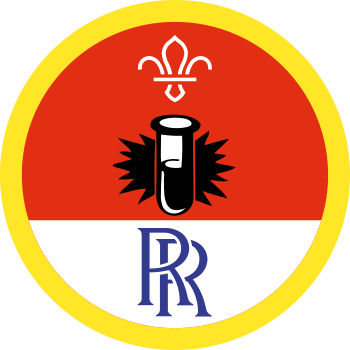
Power a lightbulb using potato energy
You’ll need
- Potatoes (2 per group)
- Sharp knives (1 per group)
- Chopping boards (1 per group)
- Crocodile clips (6 per group)
- 1p coins ( 2 per group)
- Long galvanised (zinc-plated) nails (2 per group)
- Low voltage LED electric circuit lightbulb and bulb holder (1 per group)
- Insulated wires (3 per group)
Before you begin
- Use the safety checklist to help you plan and risk assess your activity. Take a look at our guidance to help you carry out your risk assessment, including examples.
- Make sure all young people and adults involved in the activity know how to take part safely.
- Make sure you’ll have enough adult helpers. You may need some parents and carers to help if you’re short on helpers.
Planning and setting up this activity
-
Take a look at our guidance on knife safety before running this activity.
Running this activity
- Gather everyone together. Explain the safety rules around using a knife and have a demonstration of the activity. Tell everyone to never walk around when holding a knife. When using it, always hold it blade side down. Everyone should take care when cutting to make sure fingers are away from the blade. Always cut on a stable surface, never in your hand, and sit or kneel down when you cut or carve. Store knives securely after use, out of reach of young people. Always cut away from yourself and others in a clutter free area. Take a look at our guidance on knife safety.
- Ask everyone to get into small groups and give each group their own set of equipment.
- Place the potatoes on a chopping board.
- Cut a slit in one side of each potato. The slit should be big enough to slot a 1p coin in.
- One 1p coin should then be placed into each slit in the potatoes, leaving the top half of the coin sticking out.
- Next, take two galvanised nails and place one in each potato, putting them in the opposite end of the potato to the penny.
- Now, use the crocodile clips and insulated wires to connect the penny of one potato to the nail of the other potato.
- Next, use one wire to connect the remaining penny of one potato to the low voltage LED bulb, then repeat this to connect the remaining nail with the bulb.It should resemble a circuit and the light should hopefully turn on!
Reflection
This activity introduced you to the basics of electronics using potatoes. Have you made electric circuits before? This circuit was slightly different, as we used a potato as the battery. What was it like making the circuit? Was it easy or hard or confusing or fun? Did you circuit work? Did you have any difficulties? How did you work as a team and communicate? What problems did you need to solve? Is there anything you could have done better?
To make a battery from organic material, such as a potato, all you need is two metals. You need an anode, which is the negative electrode, such as zinc, and we used galvanised nails. The second metal is a cathode, the positively charged electrode, such as copper, and we used pennies.
The acid inside the potato forms a chemical reaction with the zinc and copper. When the electrons flow from one material to another, energy is released. Did the potato work well as a battery? Did you know a single potato can power enough LED lamps for a room for 40 days?
Next time, which vegetable would you use to power your circuit? Do you think we could ever use vegetables or similar materials as batteries in the future? What would be the benefits and the problems of this? Potatoes are the world’s number one non-grain crop in 130 countries They are cheap, store easily and last for a long time. However, you might deplete food stocks and compete with farmers.
What do you think would happen if you boiled the potatoes? It’s been found that by simply boiling the potatoes for eight minutes, it broke down the organic tissues inside the potatoes, reducing resistance and allowing for freer movement of electrons, so producing more energy.
Safety
All activities must be safely managed. You must complete a thorough risk assessment and take appropriate steps to reduce risk. Use the safety checklist to help you plan and risk assess your activity. Always get approval for the activity, and have suitable supervision and an InTouch process.
- Sharp objects
Teach young people how to use sharp objects safely. Supervise them appropriately throughout. Store all sharp objects securely, out of the reach of young people.
- Food
Remember to check for allergies, eating problems, fasting or dietary requirements and adjust the recipe as needed. Make sure you’ve suitable areas for storing and preparing food and avoid cross contamination of different foods. Take a look at our guidance on food safety and hygiene.
- To make this activity easier, you may wish to cut the potatoes or add in the nails before the session.
- To make this activity harder, you could add different components to the circuit, such as buzzer, clock or a switch. You could also use different types of potatoes or different vegetables, such as sweet potatoes, carrots or swedes, and compare them.
Make it accessible
All Scout activities should be inclusive and accessible.


